Introduction
Drupal, renowned for its robustness and flexibility, is an ideal platform for e-commerce websites. With over 1 million websites globally harnessing its power, Drupal stands out for its versatility across various industries. In this ever-evolving technological landscape, Drupal consistently enhances its offerings, equipping developers with advanced tools to realize their creative visions and enabling companies to elevate their service quality and customer satisfaction.
This article explores why Drupal is a compelling choice for e-commerce, highlighting its key features, setting up a Drupal e-commerce store, configuring modules, creating and managing products, integrating payment gateways and third-party services, customizing the store, optimizing for user experience and SEO, ensuring security and maintenance, and the support and resources available within the Drupal community. By following best practices and leveraging Drupal's capabilities, businesses can build scalable, secure, and high-performing e-commerce stores that meet the demands of the dynamic online marketplace.
Why Choose Drupal for Ecommerce
This platform, well-known for its strength and adaptability, stands out as an ideal choice for e-commerce websites. Its popularity is evidenced by over 1 million websites globally harnessing its power, a testament to its versatility across various industries. With an ever-evolving technological landscape, this platform consistently enhances its offerings, equipping developers with advanced tools to realize their creative visions and enabling companies to elevate their service quality and customer satisfaction.
E-commerce, encompassing online transactions ranging from shopping to internet banking, has seen exponential growth. The first online sale in 1994 marked the genesis of a digital commerce revolution that now sees global e-commerce sales on track to hit $8 trillion by 2026. In this ever-changing setting, a specific appealing choice arises because of its capacity to grow and customize user experiences, meeting the varied demands of online enterprises.
What distinguishes this content management system is its community-driven approach. Tales of the origins, growth, and the community's support highlight the collaborative spirit fueling its development. As Dries Buytaert, the founder of the content management system, recounts, the platform's expansion is as much about technology as it is about the people and the collective effort behind it.
Selecting a content management system for an e-commerce site implies utilizing a platform that has been meticulously improved through years of feedback and innovation. Whether it's for a small startup or a large enterprise, the extensive feature set of this content management system, including SEO tools and payment integration capabilities, makes it a compelling choice for businesses seeking to optimize their online presence. A comprehensive migration plan and strategy are essential for businesses transitioning to a new content management system, ensuring a seamless upgrade process and uninterrupted operations.
Furthermore, embracing open-source solutions like a popular content management system not only promotes technological progress but also aligns with modern values such as transparency, community participation, and constant enhancement. These principles resonate with the ethos of the e-commerce sector, where customer trust and satisfaction are paramount.
Key Features of Drupal Commerce
Commerce stands out as a comprehensive e-commerce solution, equipped with an array of features tailored for creating a robust online business. With the recent updates to Commerce Core, store administration has been enhanced, including the introduction of a new store dashboard, which streamlines the management process and creates a more user-friendly experience. The community, led by visionaries like Dries Buytaert, has continually focused on building a product that simplifies website creation for non-developers, while also offering a flexible framework for developers to craft customized web applications.
This balance between user-friendliness and developer flexibility is evident in the adoption rates of the CMS. For example, a notable 71% of leading universities depend on a specific content management system to handle their online presence, demonstrating its extensive trust and dependability. The dedication of the platform to inclusivity and growth is further shown by initiatives like Starshot, which seeks to enhance the user experience for both site builders and end-users.
Furthermore, the community's commitment to open source principles and collaborative development, including the recent addition of a video accessibility plugin, demonstrates the platform's continuous growth to address the varied requirements of its user base. In this ever-growing online market, as demonstrated by Amazon India's successful sales events, the Commerce platform is ready to provide a flexible and expandable base for online vendors to flourish in this ever-changing environment.
Setting Up a Drupal Ecommerce Store
Setting up your e-commerce platform is a crucial step towards taking advantage of the growing online marketplace. With the platform now officially recognized as 'Drupal CMS' following extensive user testing, it's clear that this content management system is designed to streamline the creation and management of digital storefronts. To begin, you'll have to install a content management system and activate the required modules, which will establish the basis of your online store. This involves understanding and configuring settings to handle transactions, manage products, and to ensure that your website adheres to privacy laws, such as those that govern cookie usage and personal information. With the right setup, you can leverage Drupal's robust framework to offer a seamless shopping experience, whether you're selling beverages, food, or household essentials. Remember, e-commerce is not just about having an online presence; it's about creating a digital space that's convenient, accessible, and tailored to your target audience. By carefully designing the structure of your establishment, you'll be well on your way to driving online sales and expanding your reach globally.
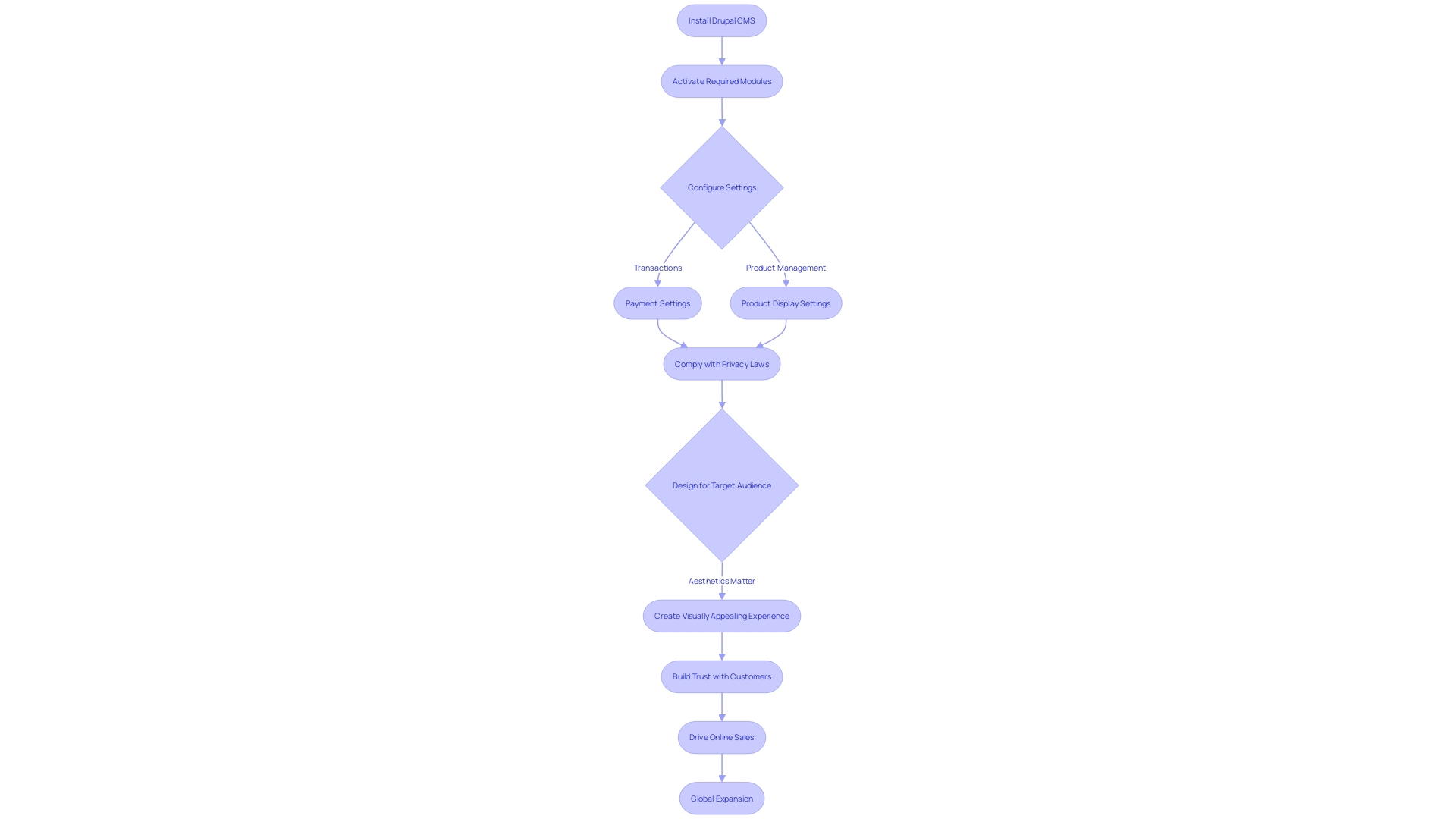
Configuring Drupal Commerce Modules
Improving the capabilities of your ecommerce platform with the assistance of Drupal Commerce is a journey that begins with understanding the essential modules that can enhance your site's performance. The modular structure of Commerce offers a plethora of options that can customize and optimize your online retail business.
To start, consider the infrastructure that underpins your ecommerce operations. A robust setup is not just about technology; it's about creating a scalable, secure, and resilient environment that can handle the demands of modern commerce. This involves a combination of powerful servers, sophisticated firewalls, and encryption technologies. AWS and cloud hosting emerge as potent solutions for businesses aiming to modernize and scale their operations without the traditional hassles of hardware and software maintenance.
Serverless architecture plays a pivotal role, particularly for core ecommerce functions such as order processing and inventory management. This approach can streamline your operations, enabling a more efficient and cost-effective management of resources. It's also crucial to assess compute-intensive services, database optimizations, and the distribution of static content on a global scale to ensure scalability.
The latest advancements in the platform, which include the introduction of a store dashboard, are designed to improve store administration and enhance merchant engagement. Such innovations respond to the ecommerce industry's evolving needs, as seen in major events like Amazon's Great Indian Festival sale, which showcased the power of digital commerce to offer incredible deals across a vast array of products.
The importance of caching in web applications cannot be overstated, as it strikes a delicate balance between speed and fresh content delivery. Like any dynamic content management system, a CMS faces the challenge of generating content quickly while ensuring it remains current.
Finally, the widespread utilization of a popular content management system among top educational institutions highlights its reliability and scalability. An impressive 71% of the leading 100 universities are said to utilize a particular content management system, indicating its ability to manage intricate site structures with heavy user traffic.
By integrating these modules and strategies, you can transform your Drupal Commerce store into a powerful, nimble platform ready to meet the demands of today's fast-paced ecommerce landscape.
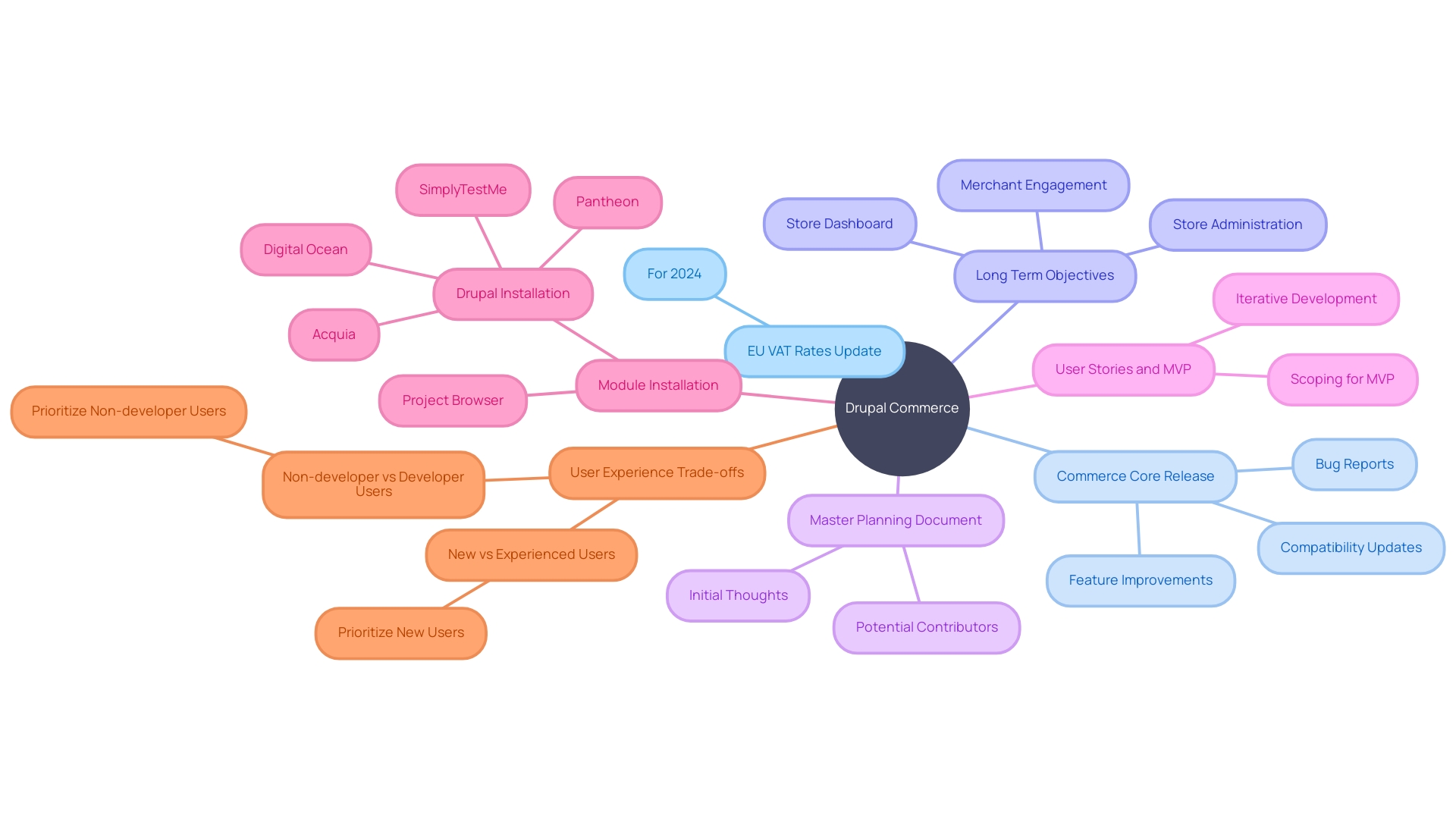
Creating and Managing Products
Exploring the core of e-commerce management, we discover the boundless potential of online goods. Unlike tangible goods that require physical inventory and complex logistics, items in the binary realm thrive. They can be replicated infinitely without the need for restocking or shipping, streamlining operations.
For those embracing the digital marketplace, the development and organization of items become streamlined. You can easily establish pricing, handle inventory details, and customize item variations. Using a strong database is crucialâit's the hub holding all vital attributes from specifications to supplier details, guaranteeing every team member has access to a singular, comprehensive source of truth.
Reflecting on the wisdom of industry experts, it's evident that eliminating friction in the user experience is paramount. It's not just about the visual appeal of electronic items but their performance and user-friendliness that enable smooth customer interactions. As we observe the merging of physical and electronic retail, the 'phygital' approach prioritizes customer convenience.
The extensive reach of electronic goods breaks down geographical obstacles, providing entry to international markets and allowing specialized items to discover their audience. The age of technology has created an environment where a product's success is no longer limited to physical shelves but rather to the limitless expanse of the internet. According to research, e-commerce spans across various industries, contributing significantly to the global economy and transforming the way we conceptualize sales and customer engagement.
Integrating Payment Gateways and Third-Party Services
In order to optimize the checkout process of your Drupal ecommerce, it is essential to integrate payment gateways and third-party services. By enabling a streamlined payment system, you can enhance the customer experience and facilitate smoother transactions. The incorporation of Stripe, a popular payment service provider (PSP), exemplifies a strategic approach to this integration. Stripe's robust system encompasses various components such as payment proposals, captures, refunds, and fraud analysis, all centered around the customer's convenience. The choice to utilize Stripe as the unified PSP caters to a global audience and lays the foundation for a cohesive payment structure.
Moreover, recent updates to Commerce Core reaffirm the importance of keeping your ecommerce platform current with the latest features and tax rate adjustments, essential for maintaining compliance and operational efficiency. In the ever-evolving digital marketplace, staying abreast of these updates is paramount.
When selecting a merchant account and payment gateway, consider factors such as security, ensuring PCI DSS compliance, and seamless integration with your ecommerce infrastructure. This will not only protect your customer's data but also strengthen the dependability of your shop. The gateway should act as a seamless conduit between your online shop, the customerâs credit card issuer, and your merchant account, validating and processing payments efficiently.
As we move further into the digital age, the convergence of financial services and technology is becoming increasingly prominent. Consumers seek expediency in their transactions, a trend that is driving the uptake of embedded financial services. This demand for quick and convenient payment methods suggests that ecommerce merchants must adopt payment solutions that cater to these expectations. By incorporating advanced payment systems into your ecommerce platform, you position your business to meet the contemporary consumer's needs and enhance the overall shopping experience.
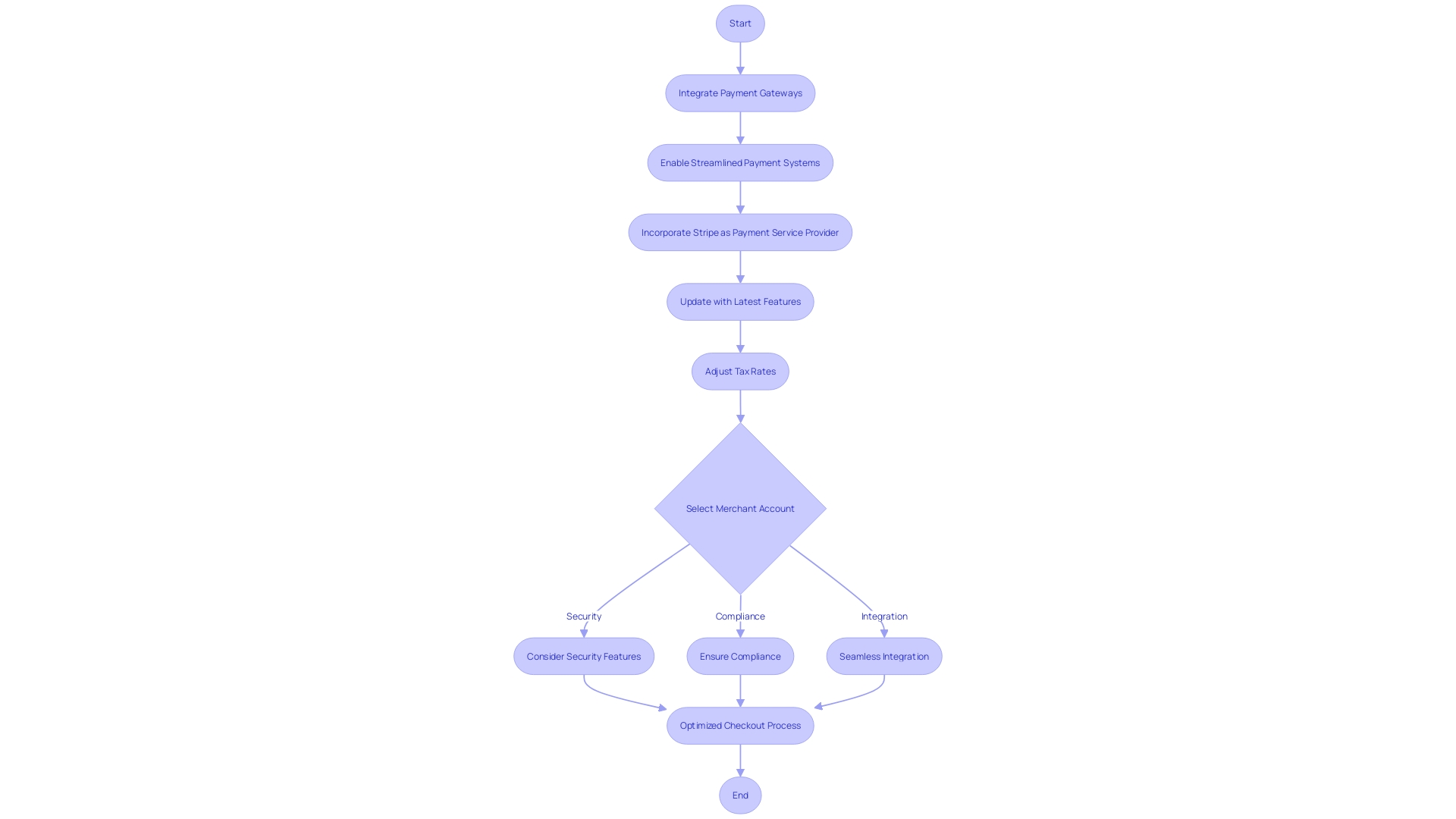
Customizing Your Ecommerce Store
To enhance your Drupal Commerce platform, it's crucial to customize the user interface to match your brand's identity, resulting in a unified and engaging shopping experience. Let's dive into the art of customization.
Changing the appearance of your e-commerce website starts with the strategic placement of site sections. By adding a 'Site Section' field to content nodes, you can effectively manage distinct areas of your site, ensuring that each section resonates with your brand's theme. This streamlined approach helps you present a consistent brand image across various pages.
Diving into design details, we leverage the insights gained from successful e-commerce events like Amazon's Great Indian Festival sale. These events showcase the power of an engaging and themed retail environment, which not only captures customer attention but also boosts sales during peak shopping seasons.
Furthermore, the success stories of entrepreneurs on platforms like Flipkart emphasize the importance of a distinctive and personalized online presence. Considering these stories, it becomes evident that the layout, colors, and fonts of your establishment are not only visual components but potent instruments to establish a connection with your audience.
Statistics reveal the critical role of mobile user experience (UX) in e-commerce. With over 50% of website traffic stemming from mobile devices, and a staggering 74% of consumers more likely to return to a mobile-friendly site, optimizing for mobile is non-negotiable. A mobile-responsive design that loads swiftly and offers a seamless shopping journey can significantly elevate conversion rates.
In summary, customizing your Commerce platform is not just a surface-level improvement but a tactical decision to improve user interaction. Drawing inspiration from successful real-world e-commerce experiences and supported by compelling data, your business can distinguish itself by providing a shopping environment that is as distinct as your brand itself.
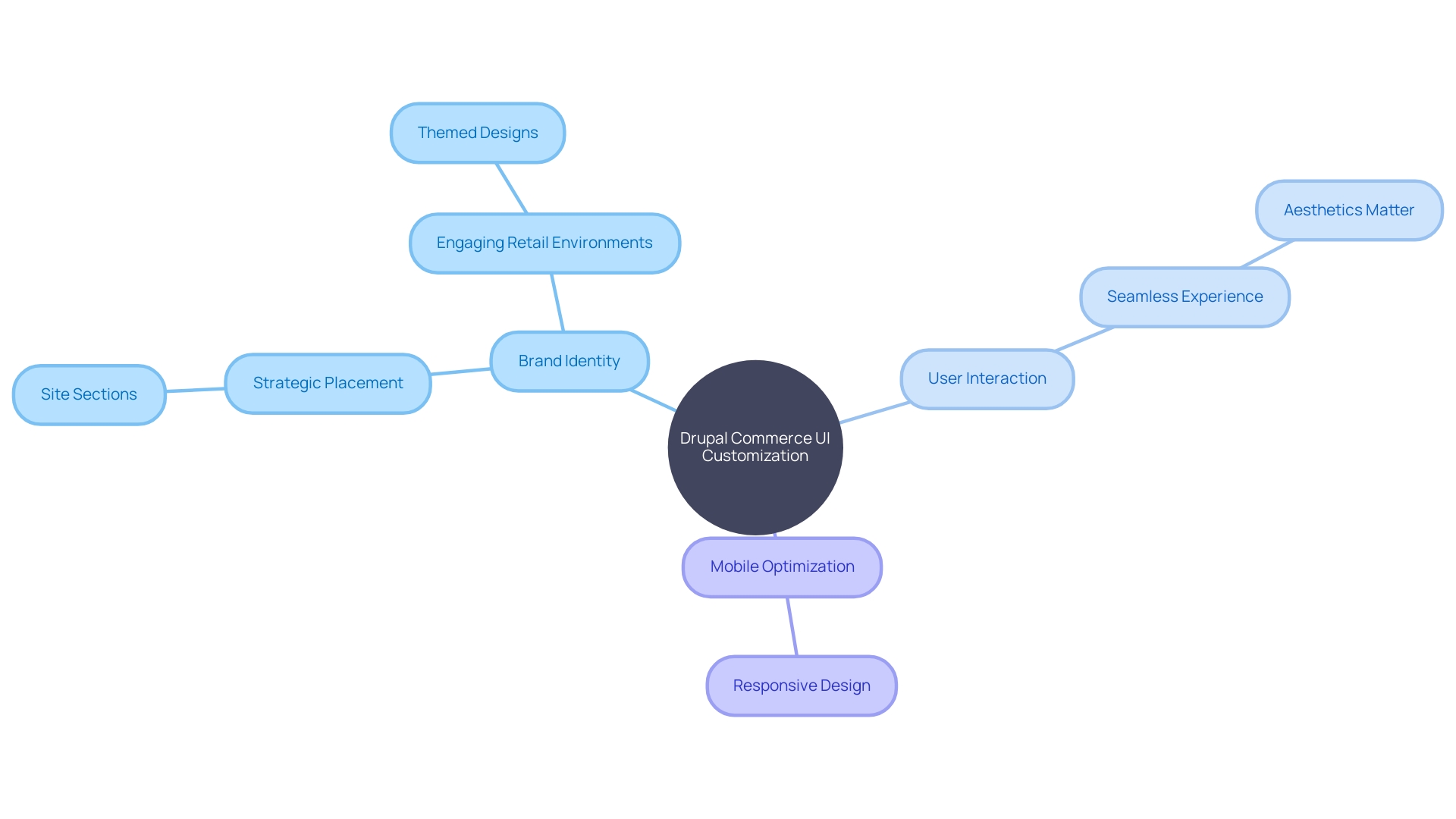
Optimizing for User Experience and SEO
Optimizing your Drupal e-commerce store involves enhancing both user experience and search engine rankings. Aesthetically pleasing design is paramount as it significantly influences customer perception and trust. In the e-commerce realm, where competition is fierce, retailers must implement strategies beyond keyword-centric content. It's essential to provide informative content that addresses consumer queries early in the buying journey.
To illustrate, consider the transformation of the Ford Foundation's website. Previously, their CMS could not keep pace with the increased volume of content, making it less effective for their audience. In contrast, a well-designed e-commerce platform not only facilitates purchases but also ensures customer satisfaction and loyalty.
Furthermore, integrating user-generated content and reviews on pages for items can establish trust and enhance SEO. This strategy, when executed with precision, can greatly benefit both users and the business. For example, fashion retailers using static questions with quantitative variables have seen uniform and valuable product information that enhances the shopping experience.
The importance of mobile UX cannot be overstated, with statistics showing that over 50% of web traffic comes from mobile devices, and sites that are not mobile-friendly can lead to frustration and loss of potential customers. In fact, mobile sites that load in two seconds or less see a 15% higher conversion rate. Therefore, focusing on a responsive, mobile-friendly design is crucial for engaging and retaining customers in today's digital landscape.
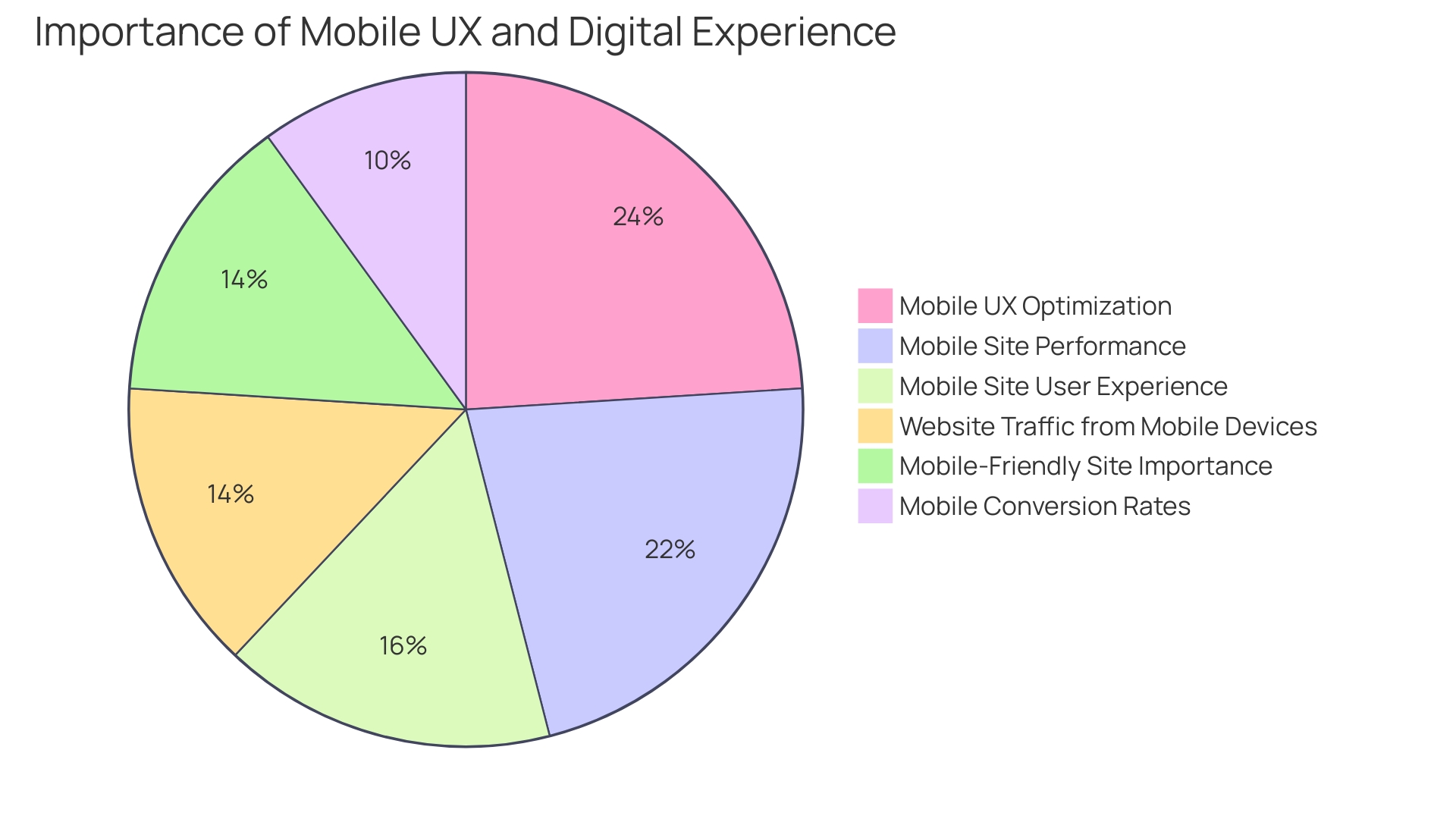
Security and Maintenance of Your Drupal Ecommerce Site
Securing and updating your e-commerce site is crucial for safeguarding customer data and ensuring uninterrupted operations. With the extensive usage of this platform across more than a million websites worldwide, it's evident that businesses from diverse industries heavily depend on it for their online presence. As technology advances, the platform continually develops, enhancing the tools developers have at their disposal for creating sophisticated and customer-centric websites.
A strategic approach to implementing updates and backups is essential. Starting with a comprehensive plan, a thorough analysis should be conducted to determine the migration's scope. This helps in understanding the best way to execute updates without disrupting the website's functionality. Prioritizing backups is also a vital step in this process, providing a safety net should any issues arise during the updates.
Furthermore, performance monitoring is an essential aspect of maintaining a website created using the Drupal CMS. As Chess.com's Head of Infrastructure James Kelty emphasizes, creating a stable IT infrastructure is fundamental for delivering a seamless digital experience to users. Likewise, site owners must ensure their infrastructure is capable of handling traffic while delivering content efficiently.
Staying informed about security trends is also important. For example, the healthcare sector has seen a rise in data breaches, highlighting the need for robust security measures across all industries. Leveraging insights from experts and being aware of the latest cybersecurity news can help e-commerce directors preemptively address vulnerabilities and fortify their sites against potential threats.
In summary, the best practices for managing a website involve meticulous planning, consistent updates and backups, vigilant performance monitoring, and staying abreast of cybersecurity developments.
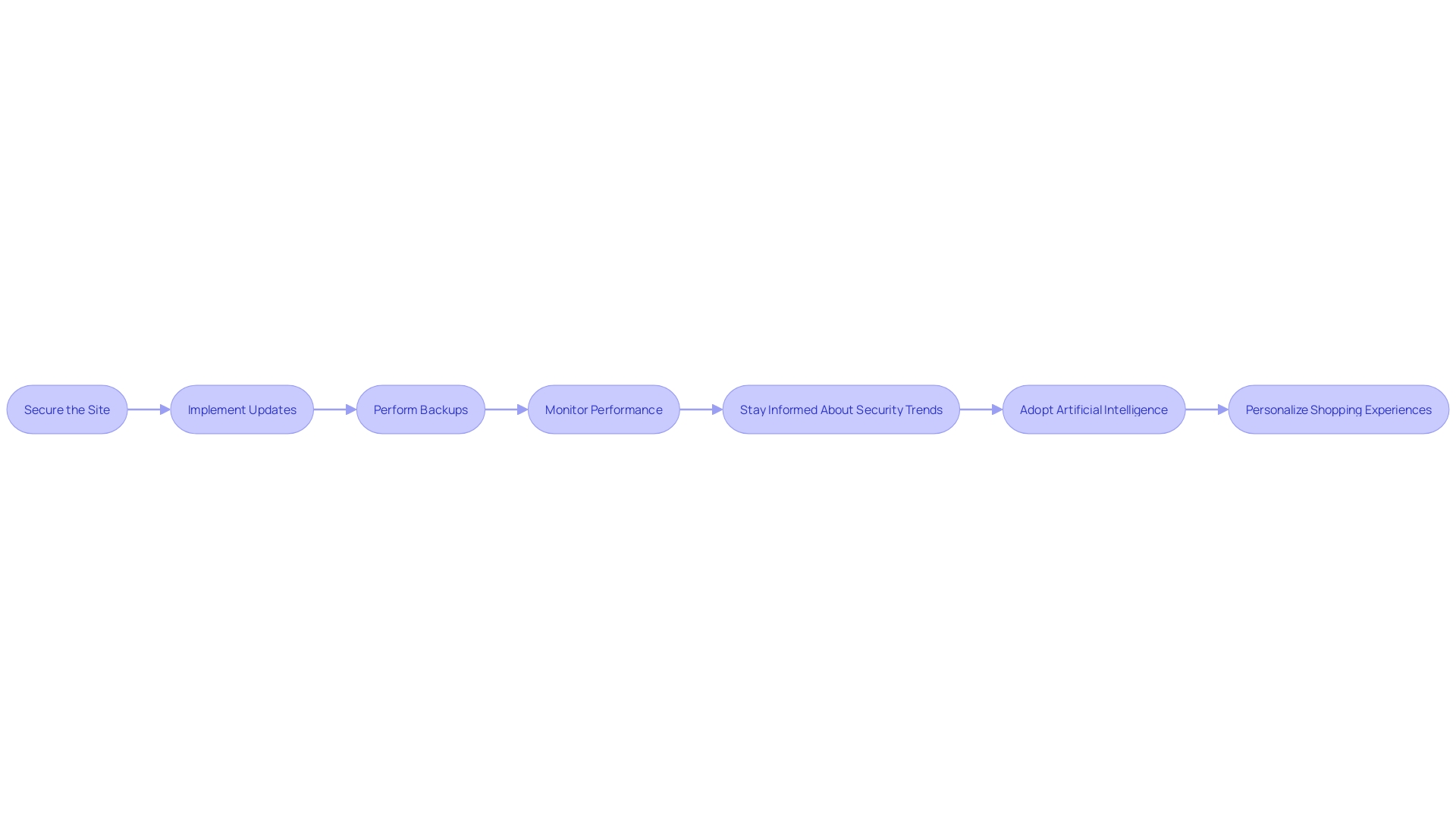
Community Support and Resources
A well-known software, recognized for its powerful framework capabilities, also provides a user-friendly product approach, allowing individuals without extensive technical knowledge to build and manage websites. This dual nature serves a wide audience, from content editors in smaller organizations to developers requiring a highly customizable platform. The community around the CMS platform is not just about code but also about supporting each other through various challenges, including the need for mental health resources, as highlighted by the CMS Community Working Group.
Drupalcon is a prime example of the strength of the community, where enthusiasts from all over the world gather to share insights and foster innovation. Notable sessions, such as the ones on digital accessibility and the transformation case study of Oregon Metro's digital presence, showcase the community's commitment to growth and inclusivity. Furthermore, the declaration of projects like Starshot at Drupalcon showcases the community's lively progress.
Indeed, the community's success is reflected in its diversity, with a recent survey showing participation from developers across 65 countries, indicating a thriving and global community. The Contribution Health Dashboards (CHD) initiative is set to further enhance this by addressing contributors' challenges and measuring the impacts of changes within the community.
Through resources like Drupalcon, mental health support, and initiatives like CHD, the open-source community exemplifies a cohesive ecosystem where members can navigate the e-commerce journey with confidence, backed by a network of peers and a wealth of knowledge.
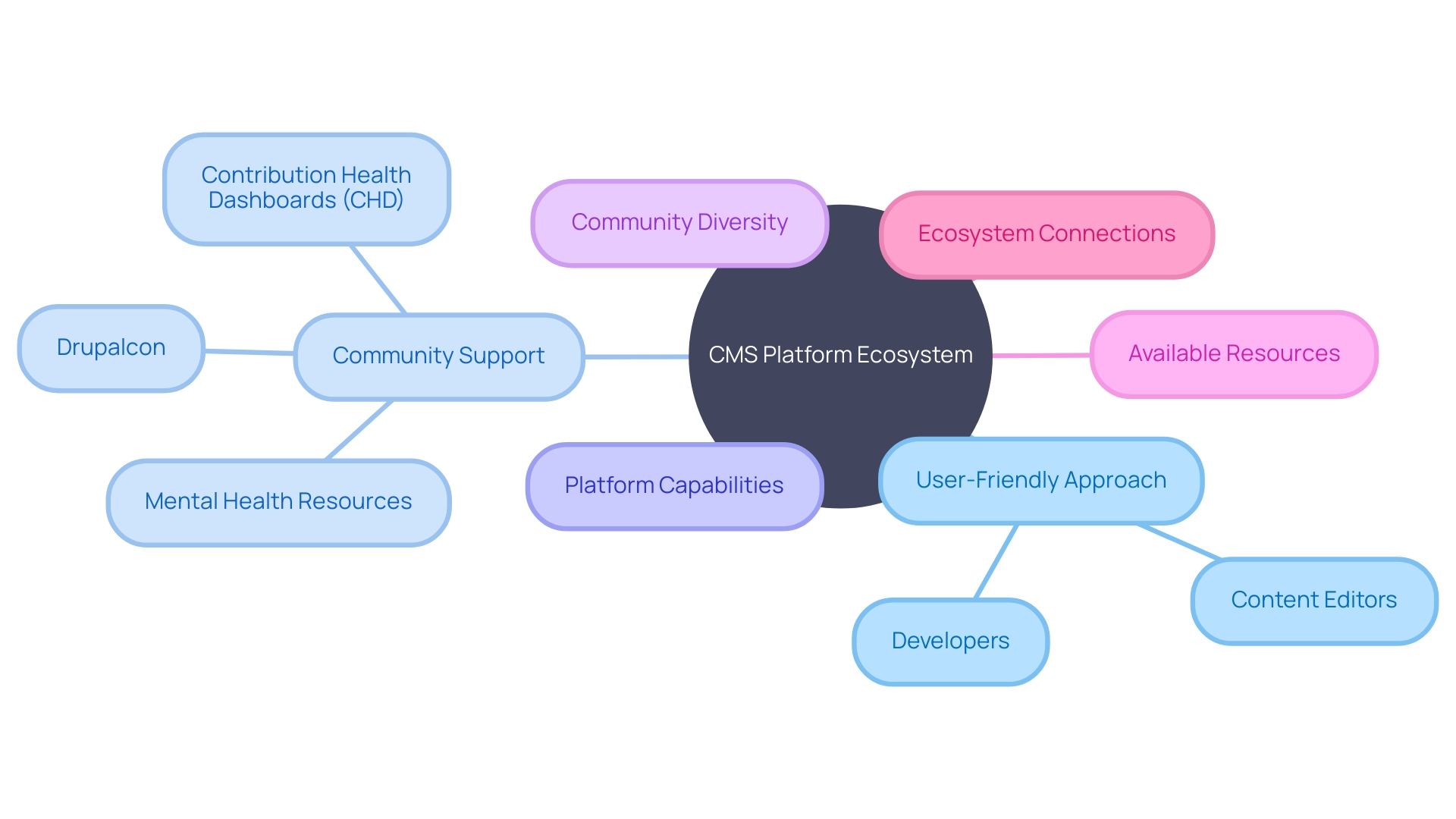
Best Practices for Drupal Ecommerce Development
Creating a scalable, secure, and high-performing ecommerce platform involves a strategic approach that begins with comprehensive planning and auditing. Begin by delineating your site sections to establish a clear structure, utilizing a 'Site section' field within nodes of relevant content types. This methodical categorization enables specific display rules and views for each section, streamlining the user experience.
A comprehensive content audit is imperative, leveraging analytics to determine the necessity and performance of existing content. This data-driven process involves evaluating page views, content validity, and user engagement, to optimize the relevance of your ecommerce content.
Embrace the microservices architecture to enhance the agility of your content management platform. This allows for the development of independent services that can be managed separately, increasing the maintainability and scalability of your application. For instance, creating microsites with self-contained navigations and content, as demonstrated in the YMCA of the North project, enables greater flexibility and a tailored user experience.
Staying informed about the latest ecommerce trends is crucial. Artificial Intelligence, for example, is revolutionizing the way businesses personalize shopping experiences. Integrating AI with your e-commerce platform can lead to more personalized and engaging interactions with customers.
Industry experts, like Henk Beld from amazee.io, emphasize the significance of community and the influence of a particular open-source CMS as both a product and framework. For content editors and small organizations, a user-friendly platform serves as a tool with intuitive interfaces, while developers benefit from its robust toolkit for creating bespoke web applications.
Considering the present ecommerce scenario, a study with inputs from a varied worldwide group of developers uncovers insights into the global acceptance and growth of a certain content management system. With involvement from different countries and the survey accessible in multiple languages, it's evident that the global community of this content management system keeps on expanding and diversifying.
Incorporating these strategies and insights into your Drupal ecommerce project will position you to build a store that not only meets but exceeds the expectations of today's dynamic ecommerce environment.
Conclusion
In conclusion, Drupal is a compelling choice for e-commerce websites due to its robustness and flexibility. With over 1 million websites globally using Drupal, it has proven its versatility across various industries. The platform consistently enhances its offerings, equipping developers with advanced tools and enabling companies to elevate their service quality and customer satisfaction.
Drupal Commerce provides a comprehensive solution for creating a robust online store. Its user-friendliness and developer flexibility make it a popular choice, with 71% of top universities relying on Drupal for their digital presence.
Setting up a Drupal e-commerce store involves installing Drupal, activating necessary modules, and configuring settings to handle transactions and manage products. By crafting the store's structure carefully, businesses can provide a seamless shopping experience and drive online sales.
Enhancing a Drupal e-commerce store involves configuring modules and strategies such as robust infrastructure, serverless architecture, and caching. These elements contribute to scalability, security, and high performance, allowing online retailers to thrive in the dynamic e-commerce landscape.
Creating and managing products in the digital realm offers limitless potential. A robust product database becomes the nerve center, housing essential product attributes and ensuring comprehensive information accessibility.
Integrating payment gateways and third-party services is crucial for optimizing the checkout process and enhancing the customer experience. Choosing a reliable payment service provider like Stripe can streamline the payment system and create a cohesive payment structure.
Customizing a Drupal e-commerce store is essential for creating a cohesive and immersive shopping experience. Tailoring the user interface, layout, colors, and fonts helps to differentiate the store and forge a connection with the audience. Mobile responsiveness is also crucial for engaging customers in today's digital landscape.
Optimizing for user experience and SEO involves providing informative content, incorporating user-generated content and reviews, and focusing on mobile UX. Aesthetically pleasing design significantly influences customer perception and trust, while mobile-friendly sites are essential for retaining customers.
Securing and maintaining a Drupal e-commerce site involves strategic updates and backups, performance monitoring, and staying informed about security trends. The Drupal community provides support and resources, fostering innovation and inclusivity.
In conclusion, by following best practices and leveraging Drupal's capabilities, businesses can build scalable, secure, and high-performing e-commerce stores that meet the demands of the dynamic online marketplace.





